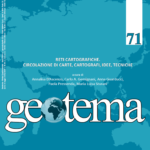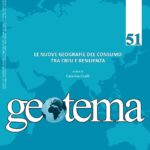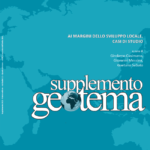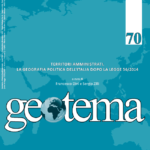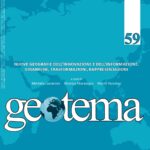Annalisa D’Ascenzo
In toto orbe missiones. La costruzione di reti di circolazione globali nell’Atlas Geographicus Societatis Iesu
La Compagnia di Gesù mostrò fin da subito una forte volontà di organizzare le missioni, le strutture e le informazioni relative ai paesi verso cui aveva rivolto la sua azione. I gesuiti seppero rapidamente costruire una rete complessa, un’articolata e capillare infrastruttura amministrativa, centrata sull’Europa, con cui gestirono la loro attività evangelizzatrice e poterono far giungere i padri ai confini del mondo conosciuto. Il controllo di caposaldi iniziali permise e favorì l’organizzazione di altri viaggi, la circolazione di uomini, tecniche, prodotti e saperi in reti a maglie sempre più fitte in cui la cartografia ebbe un ruolo rilevante, come strumento di potere e prodotto intellettuale aperto ad assorbire le conoscenze delle culture locali. Ciò è particolarmente vero per quanto attiene all’Oriente. Il piano geostrategico adottato tra Cinque e Seicento, delineato dalle Veteris Societatis Provinciæ, emerge chiaramente dall’Atlas Geographicus Societatis Iesu di Ludovico Carrez SI (1900), le cui tavole consentono di ricostruire il consolidarsi di strutture globali di potere, europeo, cattolico e imperialista. In toto orbe missiones.
The construction of global circulation networks in the Atlas Geographicus Societatis Iesu
Since its foundation, the Society of Jesus showed a strong will to organise missions on the basis of information and firsthand knowledge that were gradually aggregated through letters, reports, maps on the kingdoms toward which it turned its missionary action. The Jesuits quickly learned to build a complex network, an intricate and widespread administrative infrastructure, centred on Europe, through which they managed their missionary activity and were able to get the fathers to the edges of the known world. The control of initial strongholds enabled and encouraged the organisation of other missionary journeys, the circulation of men, techniques, products and knowledge in ever more tightly knit networks. In this context, cartography played a significant role as a powerful and ductile intellectual instrument to aggregate, absorbe and systematize local knowledge and cultures. This is especially so regarding the East. The geostrategic plan developed and employed between the sixteenth and seventeenth centuries, outlined by the Veteris Societatis Provinciæ, emerges clearly from Ludovico Carrez SI’s Atlas Geographicus Societatis Iesu (1900), whose plates allow us to reconstruct retrospectively the consolidation of global European, Catholic and imperialist power structures.
Parole chiave: Gesuiti, Reti, Cartografia, Atlanti, Potere
Keywords: Jesuits, Networks, Cartography, Atlases, Power



